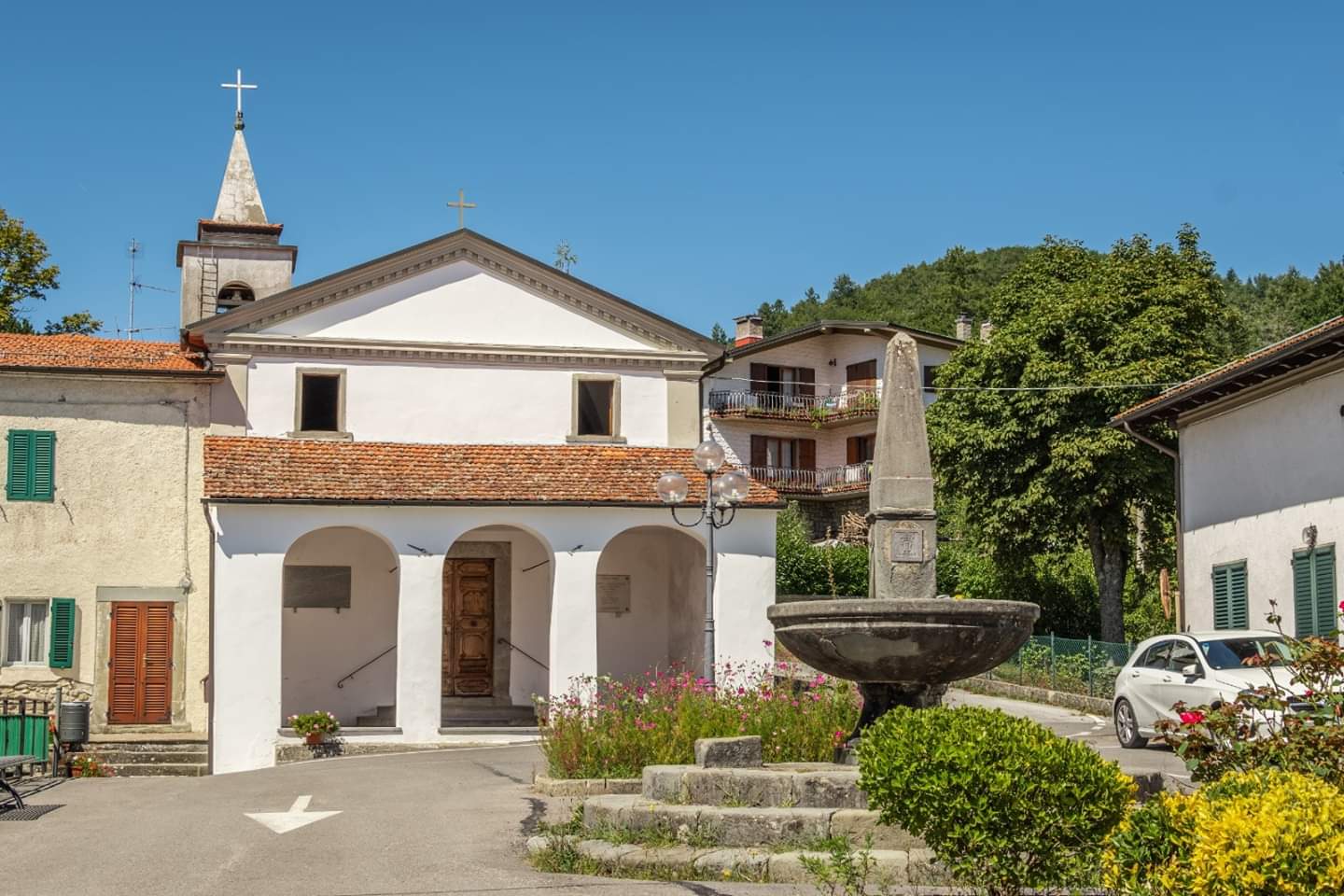Bardalone
Fraction of the Municipality of San Marcello Piteglio, Bardalone is located at an altitude of 760 m a.s.l. and takes its name from the stream of the same name, which originates from the slopes of Monte Croce delle Lari and joins the Maresca stream in Campo Tizzoro.
It is located on a ridge that descends from Monte Peciano, which is locally called “the Sassaie” for the more rocky composition of the land and for the small quarries that were active there in the nineteenth century. Just below a plateau called Alpe Piana, it consists, for the oldest part, of two rows of houses that start from the valley floor. For the rest, it consists of a series of villages separated from each other, also on the other side of the valley (Case Ducci, Case Pellegro, Campomagno, La Casa, Case Bargellini, etc.) surrounded by dense and extensive woods. It is located in a splendid position, on the sunniest side of the valley, surrounded by beautiful and intact chestnut woods that become beech at altitudes above 1000 meters. The oldest part is located near the square and the nearby town of Fontanaccia, in particular Via Provenzal, where huts were probably found even before the 1600s; probably also in the locality of Campomagno there were farms and farms before the construction of the oratory in 1618.
History
In 1618 the inhabitants of the village of Bardalone asked for a church to be erected, since to be present at religious services they had to walk up to Gavinana. So it is assumed that the area has already been populated since the 16th century (when it seems there were some mills), and in 1618 the inhabitants were already a fairly large number, located in the villages of Campomagno, in the area of the current square and in some scattered houses along the road. The Ducci di Gavinana, due to the need for traffic, in fact built some buildings along the road used as their home and shelter for transplant animals (for towing the sled and braking downhill) used for the wagons that went up to Gavinana and beyond.
The area was also inhabited in prehistoric times, but the first settlements in the Bardalone area date back to the late Middle Ages.
The locality, like the whole Bardalone valley, was formerly part of the territory of the municipality of Gavinana, and until 1600 it was a wooded area intended for cutting timber. The town acquired autonomy from the church of Gavinana in 1787 thanks to the ecclesiastical reform desired by Scipione de ’Ricci, bishop of Pistoia.
Monuments and places of interest
The church stands in the upper part of the village, on the ruins of the oratory which has been reported since 1618. The current church was built between 1723 and 1728 at the request of the inhabitants of the villages that made up Bardalone. The building has a rectangular plan, a single nave, with a gable roof. The facade is covered by a three arch portico.
Inside, the nave is covered with a barrel vault and supported by six arches. The high altar, built with pieces of remains derived from an altar of a church in Pistoia, is isolated and bears two beautiful columns with capitals. The two side altars have two pillars that support a cornice surmounted by a pointed arch.
In 1800 the church underwent numerous expansion and restoration works, which were completed in 1860 with the construction of the apse. The pictorial decoration of the pillars dates back to 1945.

